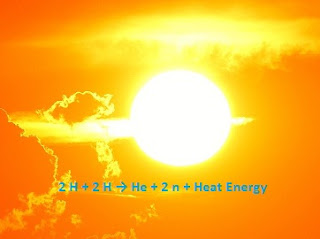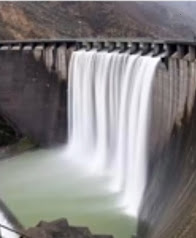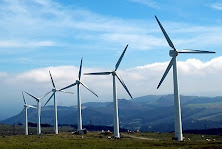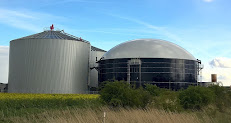WHAT IS RENEWABLE ENERGY AND ITS SOURCES?
Renewable energy: Renewable energy are those sources of energy that are available in unlimited quantities and we continuously use them.
OR
Energy sources that can be recycled are called renewable energy sources.
Advantages of renewable energy sources are given below:
- There is no pollution by using this type of energy.
- These are available in unlimited quantities.
- There are unlimited resources available for renewable energy.
- The cost of renewal energy is less as compared to other types of energy.
- Renewable energy is environment friendly.
Different types of solar energy is given below:
1.Solar energy
2.Hydro energy
3.Wind energy
4.Bio-gas
5.Bio-diesel
6.Geothermal energy
7.Ocean energy
8.Biomass energy
 |
| Solar Energy |
The heat energy released from the sun reaches the Earth in the form of radiations (photons). These radiations are stored by charging the battery through a solar panel and thus we use solar energy as electrical energy.
The other use of solar energy is given below:
1.Solar cooker
2.It provides energy to satellites
3.Solar cell
4.Solar battery
5.Solar water heater
6.Solar light etc.
→There is no transport expense as the transfer of energy is done by radiation.
→Worlds largest solar plant is situated in India (Kamuthi in the district of Ramnathpuram Tamil Nadu).
 |
| Dam |
A hydro power project is a method by which electric energy is produced by the use of hydro energy. In this method, dams are built on the rivers and the turbine is rotated by dropping the water (by use of kinetic energy of water) collected in the dam from a height. In this way the turbine rotates to generate electricity.
The water released by this method is used in many types of works such as irrigation, fisheries, tourism etc. Hence this project is also called a multi-purpose project.
Now these days many types of micro water projects in India generate electric energy. According to their production capacity they can be classified as follows:
- Micro hydro project : 0 - 100 kilowatt
- Mini hydro project : 1 - 2 Megawatt
- Small hydro project : 2 - 2.5 Megawatt
In India, Arunachal Pradesh, Jammu and Kashmir, Uttarakhand, Himachal Pradesh, Punjab, Haryana, Uttar Pradesh are the leading states in the implementation of Micro and Small Hydro Scheme. In addition Nepal, Bhutan and Indonesia are also implementing this scheme.
 |
| Wind Mill |
are mounted at some height and due to flow of wind these fans rotate and the rotation of these wings rotates the shaft of the alternator and generates electric energy.Thus we use it to generate electrical energy.
To generate electric energy from wind energy, the ideal speed of wind must be continuous at 23 meters per second.
In addition, wind energy is also used for drawing water, grinding flour etc.
 |
| Bio-gas Plant |
 |
| Jatropha Curcas leaf |
curcas, sunflower, rapeseeds, palm, karanj etc. Bio-diesel produced from these plants can operate with the same power as conventional petrol-diesel. After extracting oil from these plants, the remaining cake is used for cooking, composting, and mixing in animal feed.
Specific properties of bio-diesel are given below:
1. Sulfur / carbon dioxide is not emitted by ignition of bio-diesel.
2. It is non-toxic and non-polluted.
3. It is bio-degradable and environment friendly.
4. Hydrocarbons do not occur without burning.
 |
| Geothermal Plant |
This energy is available to a depth of about 10 kilo-meter from the surface of the Earth. As we move downwards from the top surface of the earth, the temperature increases. On entering the earth, the temperature increases by 1 degree Celsius per 64 meters of depth. In this way, there is special heat under the ground. This heat emerges from the Earth's core through rocks and crevices and reaches the earth's crust. This heat is used for obtaining the energy.
The uses of geothermal energy are as follows:
1.Generation of electric power
2.Industrial process heat
3.Space heating for different buildings.
 |
| Ocean and Tidal wave |
There are two types of ocean energy:
- Ocean wave energy
- Ocean tidal energy
1.Ocean wave energy: They generate electricity by running turbines from the waves generated due to the flow of ocean water. In this way, ocean energy is converted into electrical energy.
2.Tidal Energy: When the water rises on the beach during ocean tides, electric energy is generated by running a turbine while falling from it.
8.Biomass: It is the energy obtained from organic materials i.e. trees and animals. Animal feed and tree residuals can generate electrical energy by using this in a biomass reactor.
→It is estimated that 90% of biomass comes from trees.
The benefits of biomass energy essay is written
1. It is an indigenous source of energy
2. Biomass combustion generates less pollution than fossil fuels.








No comments:
Post a Comment
Please do not use those type of word these hurt any people.